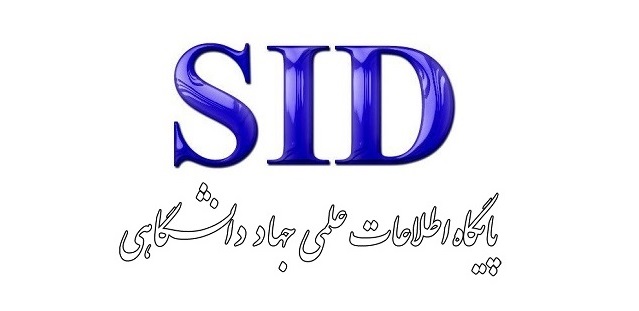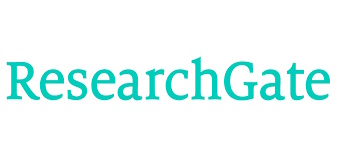Designing an Infrastructure Development Model for Medical Tourism with a Focus on Human Capital Capabilities in Public Hospitals of Iran University of Medical Sciences
Keywords:
Medical tourism, human capital, public hospitals, Iran University of Medical Sciences, grounded theoryAbstract
The objective of this study is to design an infrastructure development model for medical tourism with an emphasis on human capital capabilities in public hospitals affiliated with Iran University of Medical Sciences. This study employed a qualitative and fundamental research design. Data were collected through field research and semi-structured interviews with 22 senior managers of public hospitals under the Iran University of Medical Sciences. The analysis was conducted using the grounded theory method based on Strauss and Corbin’s approach, through open, axial, and selective coding. The results indicated that 18 core components were identified as essential elements of the medical tourism infrastructure model. These included organizational culture, development and strengthening of equipment and infrastructure, service quality, human capital, knowledge management, information technology, quality management, hospital-related environmental, structural, and economic infrastructures, hospital agility, service differentiation, benchmarking, institutional factors, national tourism attractions, market improvement, financial improvement, and internal process enhancement. The extracted model demonstrates that the development of medical tourism in public hospitals requires simultaneous attention to human, organizational, infrastructural, and institutional factors. Strengthening human capital and knowledge management were found to be key elements that can significantly enhance Iran’s position as a competitive destination for medical tourism.
Downloads
References
Abidar, L., Zaidouni, D., & En-Nouaary, A. (2020). Customer Segmentation With Machine Learning: New Strategy For Targeted Actions. International Conference on Intelligent Systems: Theories and Applications, https://doi.org/10.1145/3419604.3419794
Agrawal, K. K., & Agarwal, G. (2024). A Comparative Study of Deep Learning vs. Machine Learning Algorithms for Brain Tumor Detection. 2024 1st International Conference on Advances in Computing, Communication and Networking, https://doi.org/10.1109/ICAC2N63387.2024.10894885
Alwabel, A. S. A., & Zeng, X. J. (2021). Data-driven modeling of technology acceptance: A machine learning perspective. Expert Systems with Applications. https://doi.org/10.1016/j.eswa.2021.115584
Aufa Zahrani Putri, A. Z. P. (2023). Penerapan Algoritma Fuzzy C-Means Pada Segmentasi Pelanggan B2B dengan Model LRFM. Jurnal Media Informatika Budidarma, 7(3). https://doi.org/10.30865/mib.v7i3.6150
Barman, D., & Chowdhury, N. (2019). A Novel Approach for the Customer Segmentation Using Clustering Through Self-Organizing Map. International Journal of Business. https://doi.org/10.4018/IJBAN.2019040102
Barney, J. B. (1991). Firm resources and sustained competitive advantage. Journal of Management, 17(1), 99-120. https://doi.org/10.1177/014920639101700108
Chattopadhyay, M., & Mitra, S. K. (2023). Elucidating strategic patterns from target customers using multi-stage RFM analysis. Journal of Global Scholars. https://doi.org/10.1080/21639159.2022.2080094
Chen, B. H., Hashimoto, T., Goto, T., Kim, S. J., Santos, D. J. D., On, A. Y., & Hsiao, T. Y. (2022). Uncloaking hidden repeating fast radio bursts with unsupervised machine learning. Monthly Notices of the Royal Astronomical Society, 509(1), 1227-1236. https://doi.org/10.1093/mnras/stab2994
Dahlberg, T., & Nokkala, T. (2015). A framework for the corporate governance of data - theoretical background and empirical evidence. https://doi.org/10.3846/bme.2015.254
Elkington, J. (1997). Cannibals With Forks: The Triple Bottom Line of 21st Century Business. Capstone. https://doi.org/10.1002/tqem.3310080106
Flambard-Ruaud, S. (2015). Relationship Marketing: An Innovation in Marketing Theory and Practice. https://doi.org/10.1007/978-3-319-11845-1_70
Fuentes, I., Fuentes, I., Nápoles, G., Arco, L., Arco, L., & Vanhoof, K. (2018). Customer Segmentation Using Multiple Instance Clustering and Purchasing Behaviors. https://doi.org/10.1007/978-3-030-01132-1_22
GhGolamveisy, S., Homayooni, S., Shemshaki, M., Sheykhan, S., Boozary, P., Tanhaei, H. G., & Akbari, N. (2024). Application of data mining technique for customer purchase behavior via Extended RFM model with focus on BCG matrix from a data set of online retailing. Journal of Infrastructure, Policy and Development, 8(7), 4426. https://doi.org/10.24294/jipd.v8i7.4426
Hadid, A. B., Bouguelia, S., & Kheddouci, H. (2024). A New Method of B2B Customer Segmentation Based on Firmographic Data, and RFM and Graph Models. 2024 IEEE International Conference on e-Business Engineering, https://doi.org/10.1109/ICEBE62490.2024.00021
Han, L., Fang, J., Zheng, Q., George, B. T., & Liao, M. (2024). Unveiling the effects of livestream studio environment design on sales performance: A machine learning exploration. Industrial Marketing. https://doi.org/10.1016/j.indmarman.2023.12.021
Hitka, M., Pajtinkova-Bartakova, G., Lorincová, S., Palus, H., Pinak, A., Lipoldova, M., Krahulcova, M., Slastanova, N., Gubíniová, K., & Klarić, K. (2019). Sustainability in Marketing through Customer Relationship Management in a Telecommunication Company. Molecular Microbiology. https://doi.org/10.21272/MMI.2019.4-16
Horng, S., & Yenradee, P. (2023). Delivery Service Management System Using Google Maps for SMEs in Emerging Countries. Computers, Materials & Continue. https://doi.org/10.32604/cmc.2023.038764
Kandeil, D. A., Saad, A. A., & Youssef, S. M. (2014). A two-phase clustering analysis for B2B customer segmentation. 2014 International Conference on Intelligent Networking and Collaborative Systems, https://doi.org/10.1109/INCoS.2014.49
Kumari, J., Kumari, K., & Sinha, A. (2024). Assessment of machine learning techniques for improving agriculture crop production. In Handbook of Research on Innovative Approaches to Information Technology in Library and Information Science (pp. 303-322). IGI Global Scientific Publishing. https://doi.org/10.4018/979-8-3693-0807-3.ch014
Lathifah, S. N., & Azzahra, Z. F. (2025). AI-Driven Customers Segmentation Using K-Means Clustering. G-Tech: Jurnal Teknologi Terapan, 9(1), 320-329. https://doi.org/10.70609/gtech.v9i1.6202
Li, P., Wang, C., Wu, J., & Madleňák, R. (2022). An E-commerce customer segmentation method based on RFM weighted K-means. 2022 International Conference on Management Engineering, Software Engineering and Service Sciences, https://doi.org/10.1109/ICMSS55574.2022.00017
Madeira, A. B., Silveira, J. A. G. d., & Toledo, L. A. (2015). Marketing Segmentation: Your Role For Diversity in Dynamical Systems. GESTÃO.Org: Revista Eletrônica de Gestão Organizacional.
Manzoor, A., Qureshi, M. A., Kidney, E., & Longo, L. (2024). A Review on Machine Learning Methods for Customer Churn Prediction and Recommendations for Business Practitioners. IEEE Access. https://doi.org/10.1109/ACCESS.2024.3402092
Maulina, N. R., Surjandari, I., & Rus, A. M. M. (2019). Data Mining Approach for Customer Segmentation in B2B Settings using Centroid-Based Clustering. International Conference on Service Systems and Service Management, https://doi.org/10.1109/ICSSSM.2019.8887739
Miklosik, A., Kuchta, M., Evans, N., & Zak, S. (2019). Towards the Adoption of Machine Learning-Based Analytical Tools in Digital Marketing. IEEE Access. https://doi.org/10.1109/ACCESS.2019.2924425
Mishra, S., Nayak, P., Mallick, R. K., Gadanayak, D. A., & Panda, G. (2024). PQ event identification in PV-wind based distribution network with variational mode decomposition and novel feature enabled random forest classifier. International Journal of Emerging Electric Power Systems, 25(3), 393-404. https://doi.org/10.1515/ijeeps-2023-0123
O'Brien, M., Liu, Y., Chen, H., & Lusch, R. F. (2020). Gaining insight to B2B relationships through new segmentation approaches: Not all relationships are equal. Expert Systems with Applications. https://doi.org/10.1016/j.eswa.2020.113767
Ozan, S. (2018). A Case Study on Customer Segmentation by using Machine Learning Methods. International Conference on Artificial Intelligence, https://doi.org/10.1109/IDAP.2018.8620892
Purnomo, M. R. A., Azzam, A., & Khasanah, A. U. (2020). Effective Marketing Strategy Determination Based on Customers Clustering Using Machine Learning Technique. https://doi.org/10.1088/1742-6596/1471/1/012023
Rajan, D., & Josephine, V. H. (2024). Data Mining Techniques to Enhance Customer Segmentation and Targeted Marketing Strategies. 2024 15th International Conference on Computing Communication and Networking Technologies, https://doi.org/10.1109/ICCCNT61001.2024.10725770
Sakina, N., Arun, A. P., & Gupta, P. K. (2024). Optimizing Customer Segmentation: A Comparative Analysis of Clustering Algorithms Using Evaluation Metrics. 2024 8th International Conference on Computational System and Information Technology for Sustainable Solutions, https://doi.org/10.1109/CSITSS64042.2024.10816952
Sancar, S., & Uzun-Per, M. (2022). Feature Selection in Customer Churn Analysis: Case Study in B2B Business. IEEE International Conference on E-Business Engineering, https://doi.org/10.1109/ICEBE55470.2022.00053
Sheikh, A., Ghanbarpour, T., & Gholamiangonabadi, D. (2019). A preliminary study of fintech industry: a two-stage clustering analysis for customer segmentation in the B2B setting. https://doi.org/10.1080/1051712X.2019.1603420
Vieth, M. (2018). Customer segmentation in B2B markets: the relationship between customer segmentation and market orientation.
Wisesa, O., Andriansyah, A., & Khalaf, O. I. (2020). Prediction Analysis for Business To Business (B2B) Sales of Telecommunication Services using Machine Learning Techniques. Majlesi Journal of Electrical Engineering. https://doi.org/10.29252/MJEE.14.4.145
Wu, M., Andreev, P., Benyoucef, M., & Hood, D. (2024). Unlocking B2B buyer intentions to purchase: Conceptualizing and validating inside sales purchases. Decision Support Systems. https://doi.org/10.1016/j.dss.2023.114165
Downloads
Published
Submitted
Revised
Accepted
Issue
Section
License
Copyright (c) 2025 آذر میدخت اباذری (نویسنده); مرتضی حضرتی ; موسی رضوانی چمن زمین (نویسنده)

This work is licensed under a Creative Commons Attribution-NonCommercial 4.0 International License.









